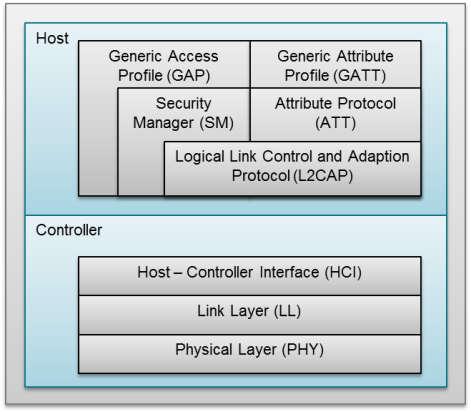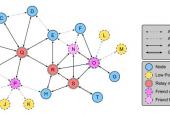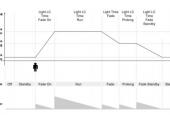Bluetooth Low Energy or BLE is a subset of the Bluetooth v4.0 standard. It has a completely new protocol stack in reference to the Open Systems Interconnection (OSI) layer and is designed for simple connections in very low output applications (battery- or stack-dependent devices).
Among the opportunities offered by this technology, one of its main advantages lies in the acceptance that it has obtained from today's major platforms such as iOS, Android, Microsoft and Linux, among others and its corresponding compatibility. It is also worth mentioning another of its essential characteristics, which is its interoperability in the world of reduced size chipset manufacturers, with very low output requirements and an acceptable communications range.
A TECHNICAL OVERVIEW
The protocol stack for Bluetooth Low Energy follows the following structure:

The physical layer contains the communications circuitry able to carry out the modulation and demodulation processes of analogue signals, subsequently transforming them into digital symbols. The BLE technology can use up to 40 2MHz channels on the 2.4 GHz ISM band. The standard uses the "frequency hopping" or "frequency jump" technique, following a pseudo-random sequence of jumps between the above-mentioned frequency channels, which offers a high level of resistance to interference.
The link layer (LL) is responsible for managing features such as the temporary requirements of the standard, message checking and forwarding erroneous messages received, management, filtering addresses, etc. In addition, it provides a definition of roles (Advertiser, Master and Slave) able to logically identify the role of each device in the communication process. The LL level is similarly responsible for controlling processes such as the change in connection or encryption parameters.
The Host Controller Interface (HCI) is a standard protocol that enables communication between a host and a controller to take place via any serial interface. For example, in most smartphones and computers, the host and the application run in the CPU while the controller is located inside separate and specific hardware, connected via UART or USB. The Bluetooth standard defines HCI as a set of commands and events enabling the interaction of both parties (host and controller).
The L2CAP (Logic Link Control and Adaptation Protocol) layer is responsible for two essential tasks in the communication process. First is the multiplexing process, in other words, the ability to give a format to messages originating from the higher OSI layers and encapsulate them into standard BLE packages, and vice versa.
The second task involves fragmentation and recombination. Packets, which at application level represent datagrams with a large number of bytes, are correctly fragmented to adapt to the BLE MTU (27 bytes of maximum payload).
For BLE, the L2CAP layer is responsible for providing access and support to two fundamental protocols. The first is the ATT (Attribute Protocol), a protocol based on attributes presented by the device, with client-server architecture which enables the exchange of information. And the second is the SMP (Security Manager Protocol), which provides a framework to generate and distribute security keys between two devices.
At the highest level of the protocols layer, we find the parallel layers of GAP and GATT. The former, GAP (Generic Access Profile), allows a device to be visible towards all the other devices and furthermore determines how one device interacts with another. It establishes different rules and concepts to standardise the lowest level operations such as:
- Interaction roles
- Operating modes and the transition between them
- Procedures to establish communication
- Safety modes and procedures
On the other hand, GATT (Generic Attribute Profile) defines how two BLE devices transfer information. This process takes place when two devices have passed the communication establishment phase (controlled by GAP) and starts the transfer of information which can be two-way.
BLE IN THE LIGHTING SECTOR
Unsurprisingly, the lighting sector is starting to demonstrate its interest in Bluetooth Low Energy technology, designing communication systems to sensorise the interior environments of homes, offices and industrial warehouses. In the world of street lighting, the installation manufacturers and maintenance sector has discovered the attraction of this technology with the aim of optimising their resources and finding a cost-effective channel of information and action on each light point.
Last year, the last update of the BLE specification defined a standard model for the lighting sector. One model that can define the servers and resources/attributes offered, defined in a document and under a set of standard rules that guarantee interoperability between different applications and platforms. Such models are incorporated into each one of the devices that make up the grid. For the world of lighting, each driver represents a device with BLE technology which can be uniquely accessed, as well as by linking together groups of devices or even broadcast-type messages that achieve the total number of nodes comprising the grid.
The Mesh model for lighting defines a series of resources that refer to the fade level, the colour temperature, the light level and even the status of the lighting (Standby, ON, Maximum level, etc.). In other words, it is able to define the set of basic parameters representing the status of a light point.



